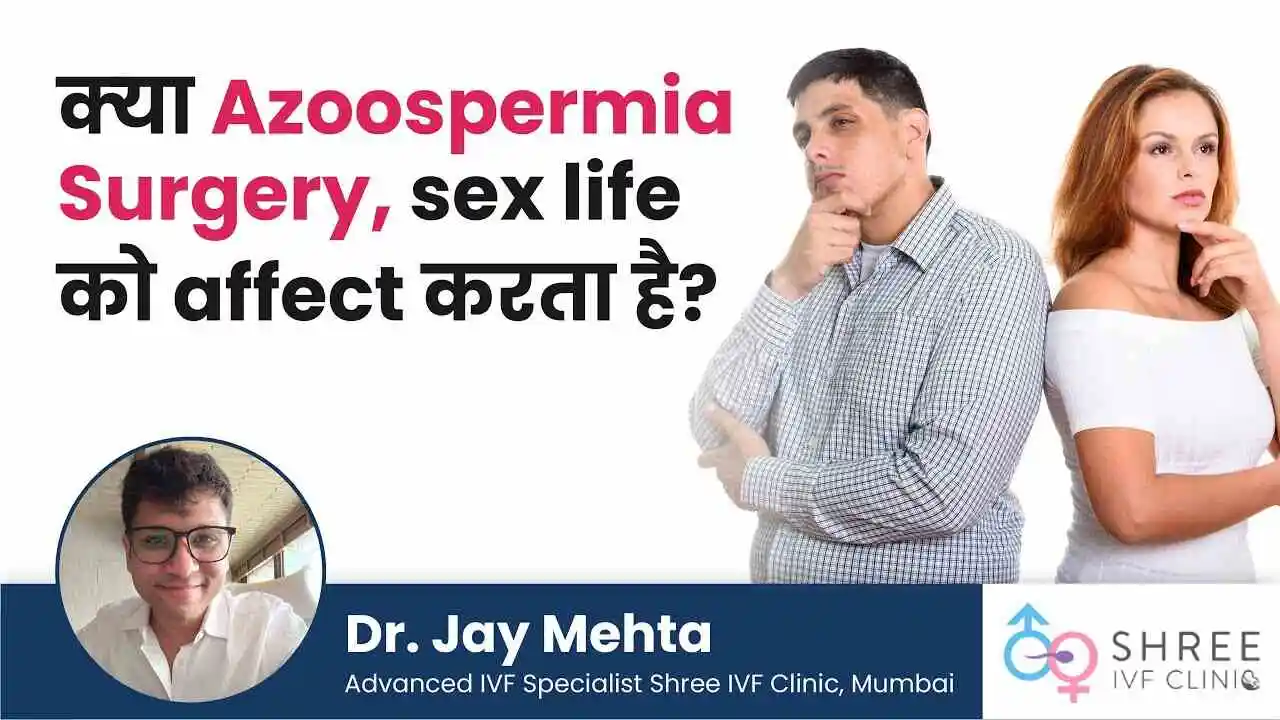Non-Obstructive Azoospermia (NOA): Diagnosis, Causes & Treatment
UPDATED ON 30 Jan 2025
AUTHOR
Dr Jay Mehta
Scientific Director & IVF Specialist with 10+ years of experience
CONDITION
GET IN TOUCH ON
Non-obstructive azoospermia (NOA) is a condition that affects many men and raises numerous concerns. It is one of the most common causes of male infertility, characterized by a zero sperm count in the ejaculate despite an unobstructed reproductive tract. At our center, we often receive queries about NOA, so we decided to create this detailed blog to provide clarity and explain possible treatments.
What Is Non-Obstructive Azoospermia?
Non-obstructive azoospermia occurs when the testes fail to produce enough sperm for release into the reproductive tract. Unlike obstructive azoospermia, where a blockage prevents sperm from reaching the ejaculate, NOA stems from a problem within the testes themselves. This condition is typically diagnosed through at least two semen analyses performed four to six weeks apart. Both reports must show a complete absence of sperm.
To understand NOA better, it helps to know the basics of male reproductive anatomy. The testes are the primary manufacturing units for sperm. They produce sperm, which are then transported via the vas deferens to the seminal vesicles, where they are nourished and stored. During ejaculation, sperm mix with seminal fluid and exit the body. In cases of NOA, the manufacturing process within the testes is disrupted, resulting in no sperm in the ejaculate.
What Causes Non-Obstructive Azoospermia?
Several factors can affect sperm production in the testes. Let’s break them down:
- Congenital Conditions: One common cause is undescended testes, medically termed cryptorchidism. If the testes fail to descend into the scrotum during childhood, they may not develop properly, leading to reduced sperm production.
- Injuries: Physical trauma to the testes, such as a sports injury or an accident during childhood, can impair their ability to produce sperm.
- Infections: Viral infections, particularly mumps, can damage the testes. Other unidentified viral infections can also disrupt their function.
- Hormonal Imbalances: The brain controls sperm production through hormone secretion. Any disruption in this hormonal signaling can lead to reduced sperm production.
- Gonadotoxic Treatments: Chemotherapy or radiation therapy for cancer can damage the testes, causing NOA. These treatments are particularly harmful because they target rapidly dividing cells, including sperm-producing cells.
Struggling with Non-Obstructive Azoospermia? Get expert treatment from Dr. Jay Mehta, a leading male infertility specialist in Mumbai. Book your consultation today for the best care.
How Do We Diagnose Non-Obstructive Azoospermia?
Diagnosing NOA involves a combination of semen analysis, hormonal testing, and genetic evaluation. A semen analysis confirms the absence of sperm.
Hormonal tests often reveal elevated follicle-stimulating hormone (FSH) levels, slightly elevated estradiol levels, and low to normal testosterone levels. These findings suggest that the testes are working harder to compensate for reduced sperm production.
Genetic testing, such as karyotyping, helps identify chromosomal abnormalities that could be contributing to the condition. This step is crucial because certain genetic factors may influence treatment options and outcomes.

5,140+
Google Reviews
397K+
subscribers
What Are the Treatment Options for NOA?
The primary question for men diagnosed with NOA is whether they can still father a biological child. While the testes may have widespread defects, some areas within them might still produce viable sperm. This opens the door to advanced surgical and reproductive techniques, such as microdissection testicular sperm extraction (micro-TESE).
What Is Micro-TESE?
Micro-TESE is a specialized surgical procedure that allows us to retrieve sperm directly from the testes. The surgery involves carefully opening the testes and examining them under a high-powered microscope to locate seminiferous tubules that may still produce sperm. These tubules function as independent units within the testes, and even in severe cases of NOA, some tubules may remain active.
This procedure typically takes about two and a half hours. It requires a skilled surgeon to identify and retrieve viable sperm while minimizing damage to the surrounding tissue. Once retrieved, these sperm can be used for intracytoplasmic sperm injection (ICSI), where a single sperm is injected directly into an egg to achieve fertilization.
How Successful Is Micro-TESE?
The success of micro-TESE depends on several factors, including the underlying cause of NOA and the hormonal profile of the patient. On average, sperm retrieval rates range from 55% to 70%. This means that in 100 men undergoing the procedure, we can expect to retrieve sperm in 55 to 70 cases.
However, there are no guarantees. In some patients, despite normal hormonal levels, sperm may not be found. This highlights the importance of a thorough clinical and hormonal evaluation before undergoing the procedure. Patients must have realistic expectations and understand that the outcome can vary.
What Happens After Sperm Retrieval?
Once viable sperm are retrieved, they are used in the ICSI process. Eggs are retrieved from the female partner after ovarian stimulation. Each egg is injected with a single sperm under a microscope, increasing the chances of fertilization. The resulting embryos are then monitored for development and transferred to the uterus to achieve pregnancy.
Are There Any Risks or Challenges?
Micro-TESE is a complex procedure and requires a high level of expertise. It is minimally invasive but still involves surgical risks, such as bleeding, infection, or damage to the testes. The emotional aspect of the process can also be challenging for couples, as the success rates are not guaranteed.
Despite these challenges, micro-TESE offers hope for men with NOA to father a biological child. The procedure’s potential benefits often outweigh the risks, especially when performed by experienced specialists.
Wrapping Up
If you or someone you know has been diagnosed with non-obstructive azoospermia, it’s essential to seek expert guidance. A comprehensive evaluation by a specialist can provide clarity on the condition and outline the best course of action. At our center, we are committed to helping patients explore their options and achieve their dream of parenthood.
Feel free to contact us for a consultation with Dr. Jay Mehta. We are here to help you and answer all your questions.
AUTHOR
Dr Jay Mehta
Scientific Director & IVF Specialist with 10+ years of experience
TREATMENT
CONDITION
CALL US 24/7 FOR ANY HELP
GET IN TOUCH ON
Share Article on
Related Readings
Does Azoospermia Surgery Affect Sex Life?
Will azoospermia surgery change your sex life? In most cases, no. Understand the benefits of the procedure and how it can help restore fertility
What is the procedure of MICRO TESE & how it works?
MicroTESE is a sperm retrieval surgery for men with Non-Obstructive Azoospermia, increasing their chances of conception through IVF or ICSI
Interesting Case Study of Reversible Azoospermia
The case of reversible azoospermia underscores the significance of accurate diagnosis, effective treatment, and the proficiency of a skilled IVF center in achieving positive pregnancy results




